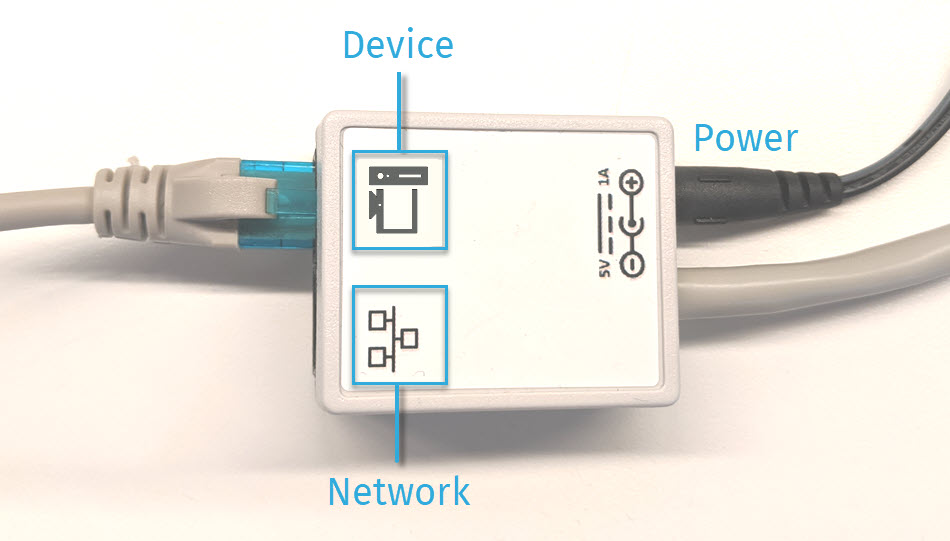Maintenance mode
When accessing an Ethernet reader in maintenance mode, you get full unauthenticated access to the reader, so you can perform actions that normally require authentication.
Typical use cases include:
- Test applications during development
- Troubleshooting
- Factory reset the reader, e.g. to exchange reader certificates or remove invalid network settings
Enable maintenance mode
Connect the Device port of the reader connector box to a maintenance laptop.
Make sure the Network port is open.
You can now get full unauthenticated access to the reader, e.g. when establishing a plain connection from a BALTECH tool.

Main differences between normal and maintenance mode
| Normal operation mode | Maintenance mode | |
|---|---|---|
| LED | Solid orange or solid green, depending on the operation mode | Red and green blinks |
| IP address assignment |
|
|
| Access permissions |
|
|
| Host as server | The reader connects to the host if its configuration contains the host interface component Ethernet - Host as Server. | "Host as server" mode is disabled. The reader won't connect to the host, even if configured to do so. |